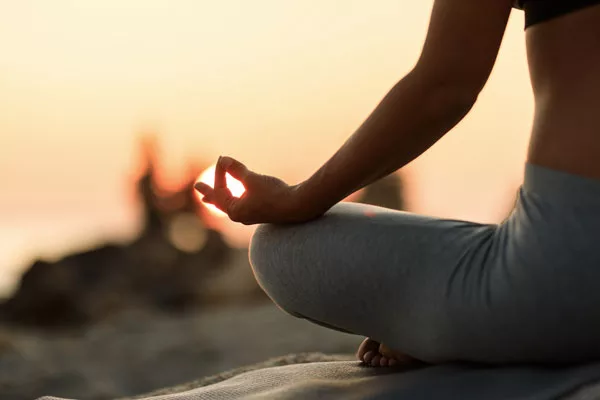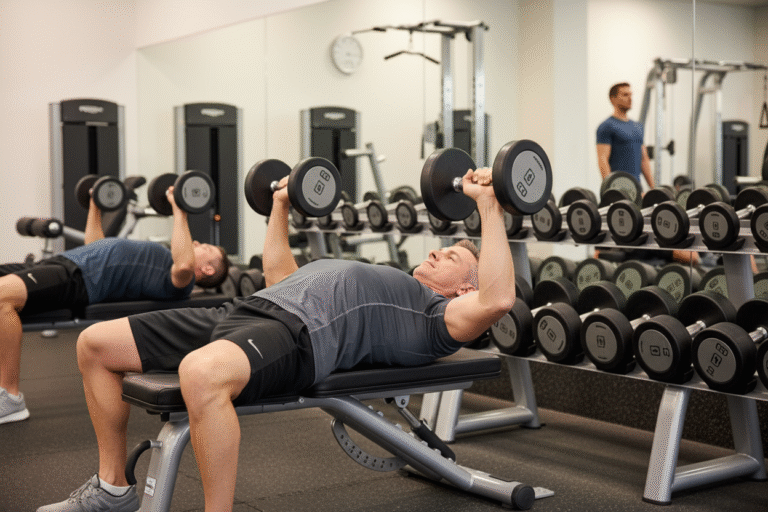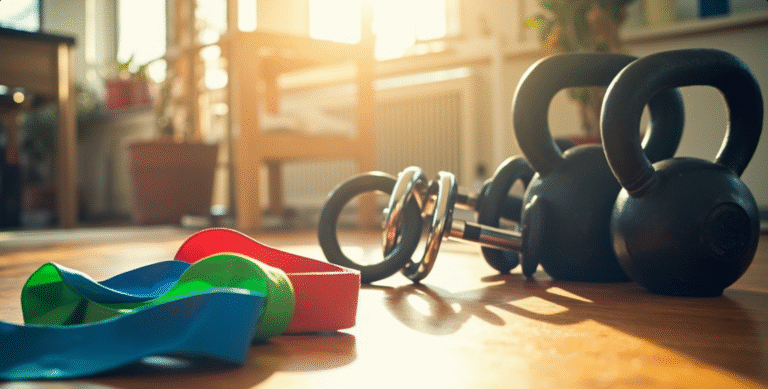Yoga and Meditation for Retirees: Embracing a Journey of Mind-Body Wellness | Vanika Retirement Guide
- Introduction
- What is Yoga and Meditation
- Yoga and Meditation for Beginners: Where to Start
- Benefits for Body and Mind
- Synergy and Differences
- Learning Resources: Books and More
- LSI Keywords Section
- Conclusion
- Frequently Asked Questions
Introduction
Yoga and meditation aren’t just for the young and spry; they’re great for us in the retirement club (especially older adults) too.
Today, let’s dive into the world of yoga and meditation where the only requirement is to breathe and maybe bend a little – or not, depending on how those knees are feeling!
What is Yoga and Meditation
So, what is this yoga meditation everyone is talking about? Picture this: a peaceful setting, deep breaths and a sense of calm that could rival any afternoon nap.
Yoga meditation is a practice that combines the physical postures of yoga with the mental calm of meditation. It’s like getting a two-for-one deal on relaxation and .
And don’t worry, you won’t have to twist yourself into a pretzel – there are styles as gentle as a butterfly landing on a leaf, perfect for our age group. Yoga can be adapted to different physical abilities, so it’s accessible to everyone. Hatha yoga poses are often used as a foundation for a safe and effective yoga practice for older adults.
Establishing a regular yoga practice can improve overall well-being, and increase body awareness which is important for balance and mobility.
Yoga and Meditation for Beginners: Where to Start
Now, how do we start this journey? First, let’s debunk the myth that we need fancy equipment – all we need is a bit of space and a willingness to try.
We can join a local yoga class for older adults, where we’ll likely find fellow retirees embracing their inner yogis and receive guidance and modifications to ensure a safe and effective practice.
Or, if we’re more of a homebody, there are plenty of online resources for beginners. Many yoga classes are online, including those designed for seniors. We’ll also find other forms of yoga, such as restorative or chair yoga, to suit different needs and preferences. Remember, it’s okay to laugh when you lose balance or mix up your left and right – it’s all part of the fun of starting something new!
When starting your routine, keep in mind that breathing exercises are often included in beginner yoga and meditation practices to help reduce stress and improve focus.
Practicing yoga twice a week is important to see improvements in strength, flexibility, balance and mental well-being.
The Health Benefits for Body and Mind
Let’s talk perks! Yoga and meditation offer a treasure trove of benefits especially for us older adults. There are many benefits and positive effects for older adults including physical health, mental well being and emotional well being making these practices a powerful tool for healthy aging.
Physically, yoga boosts flexibility, balance, and strength—key to avoiding those “I’ve fallen and can’t get up” moments. Regular practice improves balance, lowers fall risk, supports healthy aging, and benefits overall physical health. Many seniors notice lower blood pressure, better heart health, and a stronger immune system. Yoga and meditation also ease stiff joints and joint pain, making daily life more comfortable.
Mentally it’s a wonder for stress, anxiety and sleep – better than counting sheep or watching late night infomercials. These practices offer mental health benefits including reduced memory loss, improved mental well being and emotional state. Yoga and meditation reduce stress, improve emotional health and can even help you fall asleep more easily.
And emotionally it fosters a sense of community and connection. As Edna from the senior center says, “It’s the best thing since sliced bread!”
The Synergy and Differences
Now while yoga and meditation go together like peanut butter and jelly, they’re not quite the same.
Yoga often involves movement and physical postures while meditation is more about stillness and calming the mind. Mindfulness meditation is a popular relaxation technique that helps you stay focused on the present moment, enhancing attention and self-awareness. Practicing mindfulness through meditation can improve mental clarity and emotional balance.
Think of yoga as the fun workout you never knew you needed and meditation as the peaceful nap you always wanted. Together they’re the dynamic duo of well-being.
Learning Resources: Books and More
Looking for resources? There’s a world of books and online content at your fingertips. From “Yoga for Golden-Agers” to “Meditation Made Simple,” there’s something for everyone. Instructional books and videos can help you establish a safe and effective yoga practice at home, often demonstrating various yoga poses and modifications to accommodate different health conditions.
And let’s not forget about local yoga classes, including yoga for seniors and seniors yoga classes which are specifically designed to accommodate health conditions and physical limitations. These classes often teach various poses and offer modifications to suit different needs. Just imagine: a room full of people who also groan when they stand up – it’s practically a social event!
Additional LSI Keywords Section
For those keen on specific routines, there are yoga practices tailor-made for seniors.
Gentle poses that focus on joint health and flexibility are a great start. Practicing yoga regularly especially with hatha yoga or gentle yoga poses can help seniors work on improving balance, strength and overall stability. Different yoga poses can be adapted for various ability levels to ensure safety and maximize benefits.
Including a simple breathing exercise in your routine can support respiratory function and enhance well-being.
As for meditation, techniques like guided imagery or simple mindfulness can be incredibly soothing – like a mental vacation to a beach, minus the sand in your shoes.
Conclusion
Well there you have it – a beginner’s guide to yoga and meditation for the retirement phase of life. It’s never too late to start and the benefits are truly something to write home about.
So why not give it a go? Who knows you might just become the next yoga sensation at the senior center.
And if not, at least you’ll have a good story and maybe a new friend or two.
Here’s to bending and breathing our way to a happier, healthier life!
Frequently Asked Questions
Is Yoga Suitable for People with Limited Mobility?
Yes! Yoga is very adaptable. There are many styles and modifications available, including chair yoga which is perfect for those with mobility concerns. Yoga can be further adapted to accommodate various physical limitations and health conditions, ensuring safety and accessibility for everyone. It’s all about finding what works for your body.
Can I Start Yoga and Meditation at Any Age?
Yes! It’s a common myth that yoga and meditation are only for the young or super flexible. These practices are about connecting with your body and mind, regardless of age.
Do I Need Special Equipment to Start Yoga and Meditation?
Not really. A yoga mat is helpful for grip but a carpeted area or a firm rug can also work. For meditation a comfortable chair or cushion is enough. The key is comfort so you can focus on your practice.
How Long Should I Practice Yoga and Meditation Each Day?
There’s no one-size-fits-all answer. Even a few minutes a day can be beneficial. Start with what feels manageable whether it’s 10 minutes of yoga or 5 minutes of meditation and gradually increase as you feel comfortable.
What Are the Main Benefits of Yoga and Meditation for Retirees?
For retirees yoga and meditation can improve flexibility, balance and strength. They also reduce mental health issues like stress and improve sleep. Plus they’re social if you join a class.
Overall yoga and meditation provide significant health benefits including physical benefits – such as mobility, strength and injury prevention – and mental health benefits – reduced anxiety and emotional well-being. These practices have positive effects on overall well-being making them especially valuable for retirees.
Are There Any Risks Associated with Yoga and Meditation for the Elderly?
Like any physical activity there’s always a small risk of injury. Some people may experience minor joint pain but using proper modifications and practicing under expert guidance can reduce the risk of injury. Listen to your body and don’t push too hard. If you have any health concerns consult a doctor before starting. For meditation the risk is minimal but it can sometimes bring up emotional discomfort especially during deep meditation practices.
How Can I Find Yoga and Meditation Classes Suitable for Retirees?
Many yoga studios and community centers offer classes for seniors or beginners. Look for terms like “gentle yoga”, “senior yoga” or “chair yoga”. Yoga classes like yoga for seniors and seniors yoga are specifically designed to meet the needs of older adults offering safe, low-impact exercise that promotes mobility, balance and overall well-being. For meditation community centers, local libraries or wellness groups often have classes.
Can Yoga and Meditation Help with Chronic Pain or Chronic Health Conditions?
Yes, many people find relief from chronic pain or manage symptoms of chronic illnesses with yoga and meditation. These practices reduce stress and inflammation, improve circulation and overall well-being. But it’s important to tailor the practice to your specific needs and consult professionals for personalized advice. Yoga and meditation can be adapted for various health conditions and physical limitations so everyone can benefit from these practices.
What If I’m Not Flexible? Can I Still Do Yoga?
Absolutely! Yoga isn’t about being able to touch your toes or twist into complex shapes. It’s about moving your body in a way that feels good and improves flexibility over time. So lack of flexibility is actually a great reason to start yoga!
How Does Meditation Work? Do I Need to Empty My Mind Completely?
Meditation is more about observing your thoughts and feelings without judgment rather than emptying your mind. It’s normal for your mind to wander; meditation teaches you to gently bring your focus back which over time helps increase awareness and reduce stress. By staying focused and practicing mindfulness meditation encourages you to bring your attention to the present moment and enhance your ability to manage stress and overall well-being.
Are Online Yoga and Meditation Classes Effective?
Yes, online classes can be very effective especially if attending a physical class is not feasible. They offer the flexibility to practice at your own pace and in the comfort of your own home. Just make sure to follow along carefully and respect your limits.
Can Yoga and Meditation Improve My Social Life?
Yes they can! Joining classes can connect you with a community of like-minded individuals. Many find that shared experiences in yoga and meditation classes lead to lasting friendships.
What Should I Wear for Yoga and Meditation?
Wear something comfortable that allows for movement. Loose-fitting or stretchy clothing is ideal. For meditation as long as you’re comfortable anything goes!
Is It Normal to Feel Emotional During or After Yoga and Meditation?
Yes, it’s quite normal. These practices can release pent-up emotions or stress. It’s a healthy process and part of why many find yoga and meditation so therapeutic.
Yoga and meditation also support emotional health and emotional well being by helping you process and release stress which can reduce anxiety and improve overall emotional balance.
Do Yoga and Meditation Have Any Spiritual Components?
Not spiritual. You can practice yoga and meditation as physical and mental exercises. If you want to explore the spiritual side there are ways to do so.








2 Comments
Comments are closed.